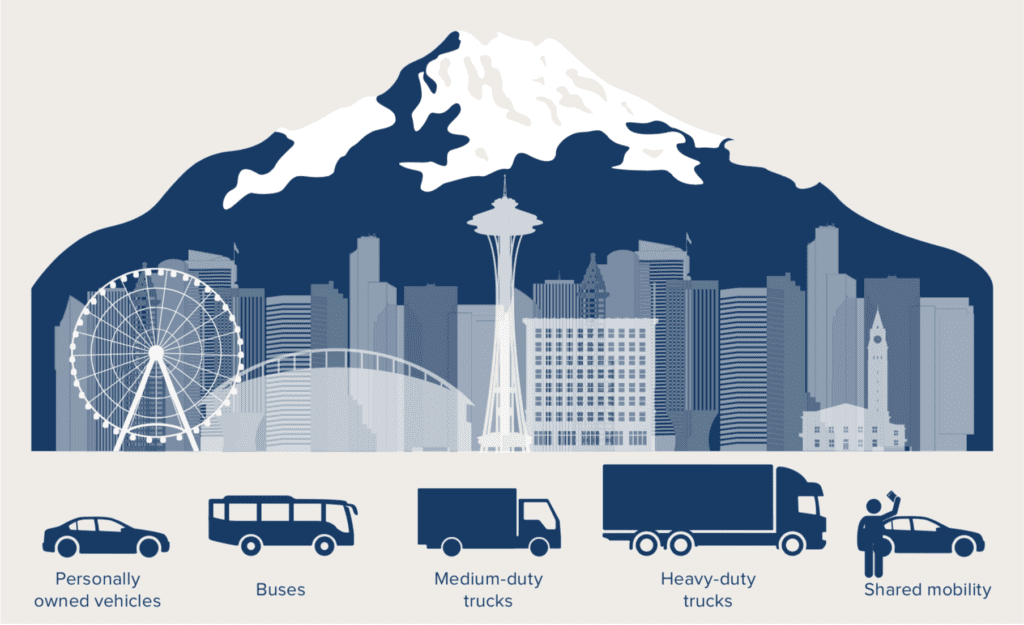
Report | 2019
Seattle City Light
Transportation Electrification Strategy Report
Rocky Mountain Institute worked with Seattle City Light to develop the first comprehensive transportation electrification strategy for a municipal utility, looking across all market segments—personally owned vehicles, trucks, buses, and shared mobility.
The market and policy landscape for transportation electrification is changing rapidly. Private developers are investing heavily in electric vehicle charging stations. Utilities are examining their role and testing new business models. New and improving technologies are accelerating the electrification of buses, ferries, freight, and fleets.
With such rapid change, utilities—investor owned and municipal—are seeking to refresh their business models with a clear understanding of how best to play an enabling role and respond to opportunities as they emerge.
For this report we worked with Seattle City Light, Seattle’s municipal utility, to lay out a strategic vision of its continuing role and the actions it should take.
Market segments are at a tipping point. Personal vehicle adoption is poised to accelerate. The financial case for electric trucks and buses is becoming clearer. High-utilization shared-mobility vehicles are ripe for electrification.
- Critical to personally owned vehicles, vehicle costs are soon to reach a tipping point as battery costs are projected to reach $150/kWh in 2019 just as more vehicle models are soon to be available from manufacturers; however, available infrastructure continues to be a bottleneck and an opportunity for utility investment.
- The report also highlights large spot loads associated with electrified fleets of buses or medium- and heavy-duty trucks, which can easily overwhelm available capacity and require grid upgrades. As electric bus and truck technologies rapidly improve, these segments are likely to electrify quickly because they are responsive to the favorable economics of electricity as fuel.

Based on market conditions RMI recommends that utilities focus on programs in three core areas:
- Invest in charging infrastructure with an emphasis on universal access and expanding coverage
- Develop new rates and improve customer service for the transportation market
- Prepare for heavy-duty electrification